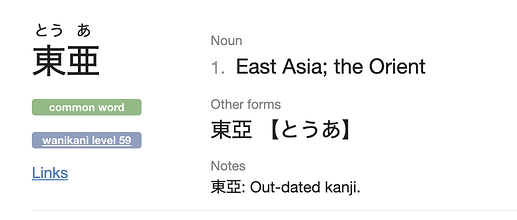This Kanji (radical) is tricky as hell since it got a lot of baggage from Chinese mythology. I believe it is one of the way to refer to Blue Dragon. That is why it is in 東京 for example.
I found out about it here.
Hmm… I’m not saying I do think of it as that, but… I’ve certainly seen more rats there than everywhere else in my life combined… and I have family who live on a farm… and I don’t even go to Shibuya very often…
Or perhaps Zenshi was inspired by the Kanji かな???
What, not cold pizzas? Cold pizza in the morning is the best! ^,-
^,- I’m 1/4 Polish as well, but still crack the same jokes ^,-
Wait, is MacFinch Polish now ? 
I prefer to avoid accusation that my keyboard is broken so I have chosen english nickname. People are confused with ą, ć, ę, ł, ń, ó, ś, ź, ż. for some reason 0_o
Like most kanji this doesn’t originate in Japan, but 禾 is a plant stalk, it’s more closely associated with rice than wheat. My kanji dictionary makes it explicitly about rice in 税.
The meaning comes from the radical 冫(ice, from 仌). The 東 is just there as a phonetic component. Something like 90% of all Chinese characters are combinations of one semantic component and one phonetic one.
(I like how 吾 looks a bit like “GO” and all kanji that have it as the rightmost component have the onyomi ご…)
Sometimes the phonetic component in a phono-semantic compound was chosen to be close in meaning too. But 東 itself came to be used for “east” for phonetic reasons; it didn’t start out with that meaning. So it’s not unreasonable to not associate it with east at all in compounds.
Btw., unrelated to kanji but maybe interesting, the origin of the word ひがし is ひむかし (日向し facing the sun).
All of us must be a lot of fun at parties… xD
This thread was meant for diarrhea like stuff, or other shit in the nose (鼻糞), but we are drifting into serious discussion about linguistic anyway 
Uff… so I am not the only one like that? xD
For that reason I usually don’t bother to check if any radical is there for sound or for the meaning. It is not working well in Japanese anyway, and those radical tend to have some relation to the meaning which is more useful for remembering them.
Have you got any kanji, words, or anything like that, that make you smile because you see it in funny way?
猫山さん、
Awesome insight — どうもありがとうよ!
I’ve always been rather tickled by the word 無茶, meaning absurd. Made up of the kanji ‘mu’ (無) meaning none/nothing & ‘cha’ (茶) meaning tea.
As a British person, I can’t imagine anything more absurd than a lack of tea.
How about tea without milk? Would it be more of an absurd for you? xD
Maybe 無茶乳 (mu-cha-nyuu)? Haha
Actually, that’s how my wife drinks it but yes I did think it was absurd the first time she told me!
So that would be 無茶なお茶ですね? xD
This one is more disturbing than funny…
突 - to stab
Bottom part is often written with 犬 radical. So we have hole in a dog… What they are doing to those poor animal…
But maybe this kanji is self-reflection?
悪 - bad, wrong
Written with 亜 - Asia and 心 - heart
I see we have a fellow RTKer!
I did a large part of KanjiDamage, which was pretty dope too, but it interpreted the top component as “sub-”, which I think makes more sense: http://www.kanjidamage.com/kanji/112-sub-亜
I still refer to KanjiDamage every once in a while because it’s often a nice index. Just be warned, R-rated language xD
EDIT: HOLY CRAP! I hadn’t used it in so long that I forgot how awesome KanjiDamage’s index actually is! It has disambiguation sections on various different words! Like look at this: http://www.kanjidamage.com/synonyms/89-condition-or-context
Just what I needed…
You would need to explain that term to me.
Actually for the joke it does not matter. What matter is that it is listed as one of the meaning (first one) on jisho 
Edit:
Used over 1000 times in 5000 books.
Oh I guess I was mistaken. RTK is a highly debated approach to starting to learn the Kanji. It does not teach any vocabulary. It is most useful just for learning to write the Kanji or at least to have familiarity with all of the major Kanji. It came before wanikani, and is still superior to it (Yeah, I said it, haters from WaniKani, stay mad!) because you can finish it quickly and get to real studies, and because there is a community at Kanji Koohi (a website based on the RTK approach) that publishes mnemonics from various users, so you’re not stuck with pre-given mnemonics.
Heisig you mean?
I use the main idea but not the exact method. I do break down kanji to its roots and then learn them first, but I put all “meanings” from jishou to anki and use mnemonic only when they are obvious or I struggle with kanji.
And I learn kanji as I meet them in text.


